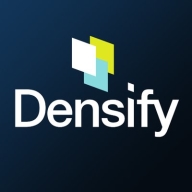

OpenText Cloud Service Automation and Densify are competing products in the cloud management category. Users prefer OpenText for its pricing and customer support, while Densify is favored for its advanced feature set.
Features: OpenText Cloud Service Automation includes scalable cloud orchestration, optimized resource management, and broad operational focus. Densify offers advanced capacity planning, resource optimization, and visibility across multiple environments, focusing on precise optimization needs.
Room for Improvement: OpenText could improve its feature set to match advanced competitors and expand integration capabilities. Additionally, enhancing its operational precision would benefit users with specific optimization needs. Densify might benefit from simplifying its deployment process, reducing initial investment costs, and broadening its user support options to attract a wider audience.
Ease of Deployment and Customer Service: OpenText boasts straightforward deployment and benefits from efficient customer support, making it accessible for many organizations. Densify’s deployment is more complex, but it is accompanied by strong customer service that helps users navigate its sophisticated offerings.
Pricing and ROI: OpenText Cloud Service Automation often incurs lower setup costs, offering quicker ROI, appealing to budget-constrained organizations. Densify requires higher initial investment, but its advanced features provide longer-term benefits, appealing to those prioritizing superior functionality.
| Product | Market Share (%) |
|---|---|
| Densify | 0.9% |
| OpenText Cloud Service Automation | 0.7% |
| Other | 98.4% |


| Company Size | Count |
|---|---|
| Small Business | 1 |
| Midsize Enterprise | 1 |
| Large Enterprise | 9 |
| Company Size | Count |
|---|---|
| Small Business | 1 |
| Large Enterprise | 6 |
Densify is a hybrid cloud and container resource management platform that makes workloads self-aware of their precise resource requirements and automates the resource management and selection process. This solution helps you control your cloud spend and also helps your apps perform and scale better. Densify enables you to match your cloud requirements with the optimal cloud supply. Additionally, Densify is the only technology that leverages patented, predictive machine learning-powered analytics to perform advanced modeling of workload patterns, and provide precise optimization directives. It is ideal for cloud engineers, container platform owners, and IT finance.
Densify works by:
Densify Features
Densify has many valuable key features. Some of the most useful ones include:
Densify Benefits
There are many benefits to implementing Densify. Some of the biggest advantages the solution offers include:
OpenText Cloud Service Automation provides open, heterogeneous, extensible enterprise-grade cloud service lifecycle management to design and orchestrate full stack services. CSA embraces existing automation assets with an enhanced orchestration engine, which provides IT with an informed, transparent delivery of secure compliant services for the hybrid cloud.
We monitor all Cloud Management reviews to prevent fraudulent reviews and keep review quality high. We do not post reviews by company employees or direct competitors. We validate each review for authenticity via cross-reference with LinkedIn, and personal follow-up with the reviewer when necessary.